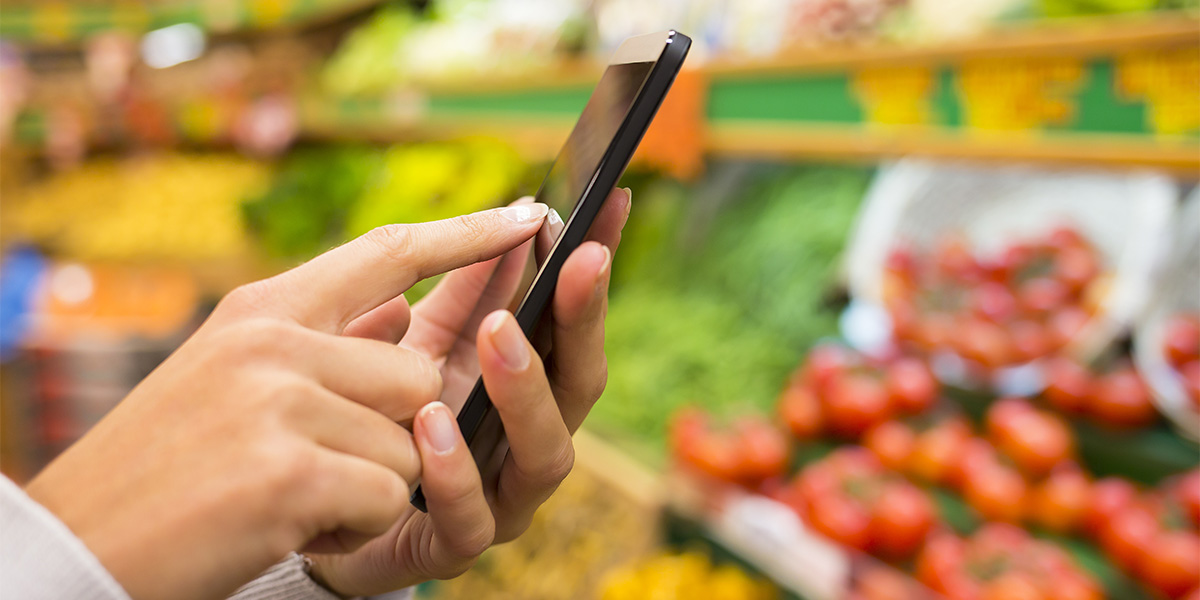Glass fragments in water, bacteria in milk, pieces of plastic in minced meat: In 2016, about 50 percent more food recalls were performed than in 2015 in Germany alone. The situation is similar at an international level. If there is a threat of a recall, food companies must know exactly to whom they have delivered which product. 5 steps on how you can bring seamless transparency into your supply chain.
1. Define targets
Only a good traceability concept with clearly defined targets leads to success. First, determine the actual situation in your company, identify weak spots and determine what you want to - or even have to - achieve with traceability. Do you need more food safety, faster recalls or marketing objectives? Which quality standards are of particular relevance for you? Are there new laws or regulations that you have to comply with? The individual requirements and desires of companies differ greatly in this respect: A Swiss cheese producer is subject to entirely different legal framework conditions than an American meat producer. A recall action in Germany has to be completed faster than in other countries. On top of this are new developments driven by trade or consumers, such as new quality seals. All of this has to be planned strategically and conceptually. It is therefore sensible to create a mixed project team consisting of various competences and operative knowledge. A conceivable mixture could be staff from IT, production departments and Quality Assurance as well as members from management. In this phase, it is also very important that your software partner is already on board.
2. Defining lot sizes
The quality of traceability depends on lot definition and lot size. One thing is for sure, smaller and homogeneous lots enable a more targeted traceability process. However, with smaller lots, the work processes associated with data entry, and therefore costs, increase. When defining or restricting lots, experts therefore recommend a compromise between individual risk management on the one side and profitability on the other. A frequently sensible and internationally proven practice is the formation of day lots or smaller lots. More advanced, general recommendations are less sensible as the structural and organizational differences in companies are too great. One example: Milk from large-scale agricultural operations, which is marketed and distributed via one dairy operation can still be more easily traced despite large lot sizes than organic cheese produced in small lots, which is marketed via specialist organic shops. Large raw material lots are also not critical in the case of beets for sugar production, which are stored in huge quantities in fields - the formation of smaller lots is not necessary due to the low risk that is involved here.
3. Select identification type
The prerequisite for complete traceability is the clear identification and identification of the products concerned - ideally automated. This is only possible with the right instruments such as identification numbers, barcodes or RFID according to GS1 standards. Common standards in this context are the GS1 128, the shipping unit number (NVE or SSCC) and EPCIS. Decisive for all further identification processes is the receipt of goods. Ideally, incoming raw materials are already identified by the supplier. If not, the goods should, for example, a GS1 128 upon delivery get. This lays the foundation for transferring the information from IT-supported stock, production, packaging and pricing to picking. In principle, traceability documentation is also possible on paper. However, with increasing production volume, the number of departments involved and people involved in the documentation process and the large number of raw material batches in the product, the documentation requirements are also increasing.
4. Capturing the right data at the right place
The organization of traceability becomes more complicated whenever different raw material batches are mixed in food production. Here, new lots are formed that have to be administered and passed on to the next steps in production or packaging. Install IT data capture points at all relevant stations of the operative process to capture and process information online. Whether you use mobile terminals, a PC or stationary barcode readers depends on the spatial situation in your operation as well as your individual material flow concept. It is important that the data is captured directly in the process. Only in this way can you seamlessly ensure which batch and which ingredient were put in the finished food product. This includes the documentation of rework quantities that enter the production process again. By capturing and examining data at all production levels, problems can be quickly detected and even avoided before a malfunction in the process occurs.
5. Use data and create added value
Every traceability system is only as good as the quality of its data. Ultimately, it's about being able to analyze and visualize data with your software. Only then can you efficiently organize and automate recall processes - which to some extent is already required by laws, directives and audits. In addition, you can meet your obligation to provide supporting documents at the press of a button, indicating that the product attributes printed on the labels are correct. And this is becoming more and more important: For instance, when providing valid information on CO2 emissions in production. The significance of traceability systems will certainly continue to grow in the future. In the German-speaking countries, many companies already transfer their data to consumer information systems, such as fTrace, mynetfair or ATC. These or similar databases will most likely also play a role at an international level. In this case, traceability will not only provide a sales-relevant added value, but will also become a basic requirement to partake in business relations in the first place.And finally traceability systems also offer a huge opportunity to optimize processes and to benefit from them economically as well. Purchasing optimization, current stock information, secure planning bases, meaningful evaluations and statistics, precise batch calculations – all of these are things that your business will ultimately benefit from.


